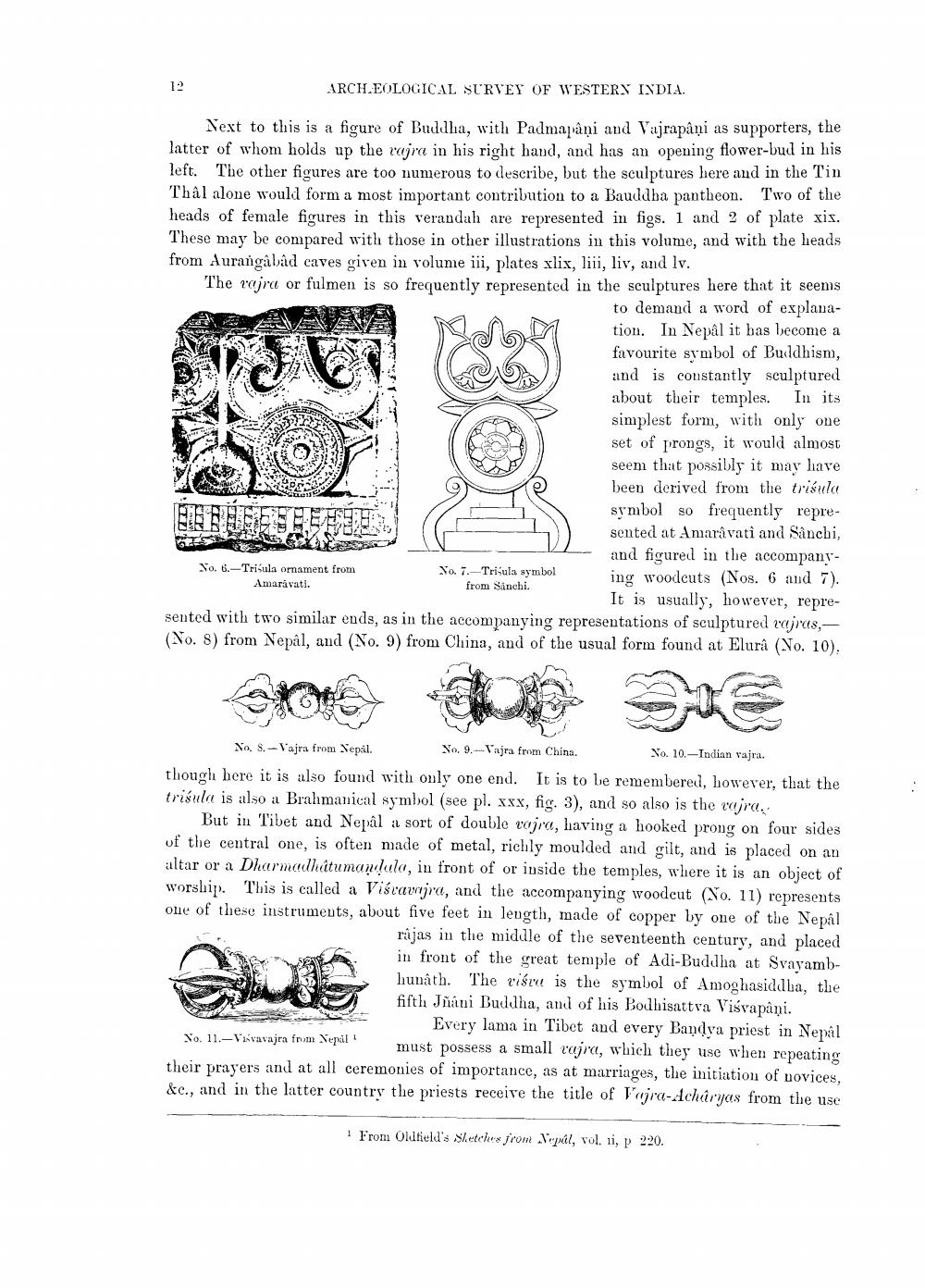________________
12
ARCHEOLOGICAL SURVEY OF WESTERX IXDIA.
Next to this is a figure of Buddha, with Padmapâņi and Vajrapâni as supporters, the latter of whom holds up the vajra in his right hand, and has an opening flower-bud in his left. The other figures are too numerous to describe, but the sculptures here and in the Tin Thâl alone would form a most important contribution to a Bauddha pantheon. Two of the heads of female figures in this verandah are represented in figs. 1 and 2 of plate xis. These may be compared with those in other illustrations in this volume, and with the heads from Aurangabad caves given in volume iii, plates xlix, liii, liv, and lv. The vajra or fulmen is so frequently represented in the sculptures here that it seems
to demand a word of explanation. In Nepål it has become a favourite symbol of Buddhism, and is constantly sculptured about their temples. In its simplest form, with only one set of prongs, it would almost seem that possibly it may have been derived from the trisula
symbolso frequently repreNR NPN
sented at Amaravati and Sanchi,
and figured in the accompany
Yo 7.-Tribula symbol ing woodcuts (Nos. 6 and 7). Amaravati.
from Sanchi.
It is usually, however, represented with two similar ends, as in the accompanying representations of sculptured vajras,(No. 8) from Nepal, and (No. 9) from China, and of the usual form found at Elurâ (No. 10).
KS
22
No. 6.-Trisula ornament from
No S. -Vajra from Nepal No. 9.-Vajra from China.
No. 10.-Indian vajra. though here it is also found with only one end. It is to be remembered, however, that the trisula is also a Brahmanical symbol (see pl. xxx, fig. 3), and so also is the vajra.
But in Tibet and Nepal a sort of double vajra, having a hooked prong on four sides of the central one, is often made of metal, richly moulded and gilt, and is placed on an altar or a Dharmadhůtumandula, in front of or inside the temples, where it is an object of worship. This is called a Viscavjra, and the accompanying woodcut (No. 11) represents one of these instruments, about five feet in length, made of copper by one of the Nepal
râjas in the middle of the seventeenth century, and placed in front of the great temple of Adi-Buddha at Svayambhunath. The vibru is the symbol of Amoghasiddha, the fifth Jūâni Buddha, and of his Bodhisattva Visvapâni.
Every lama in Tibet and every Bandya priest in Nepal No. 11.- Vavavajra from Nepal! must possess a small vara, which they use when repeating their prayers and at all ceremonies of importance, as at marriages, the initiation of novices, &c., and in the latter country the priests receive the title of Vajra-Acharyas from the use
From Oldtield's Sletche from Vrpúl, vol. 1, p 220.




